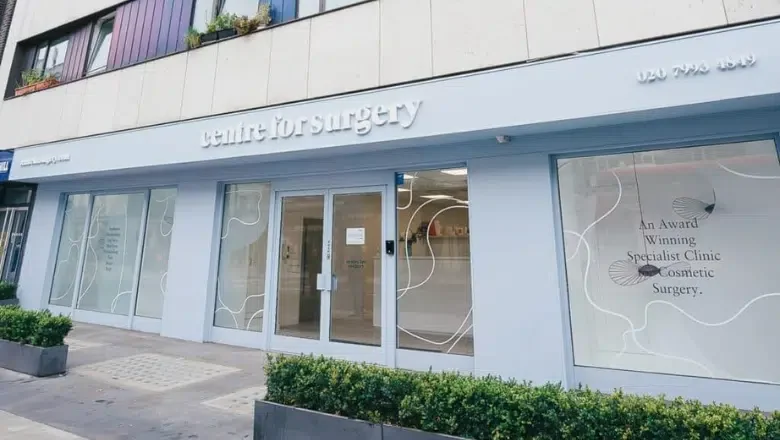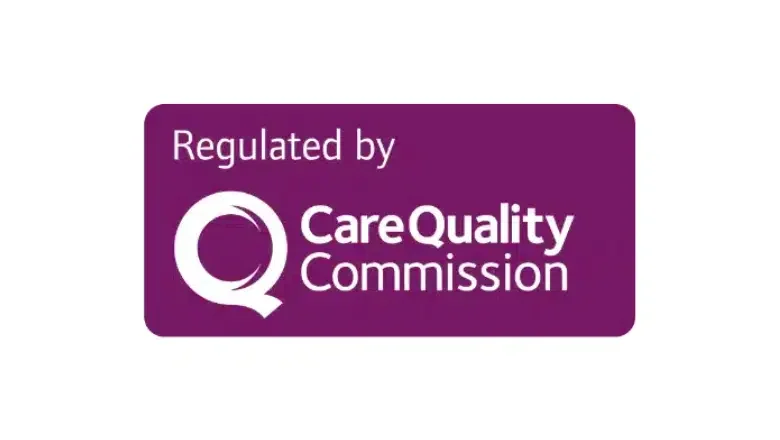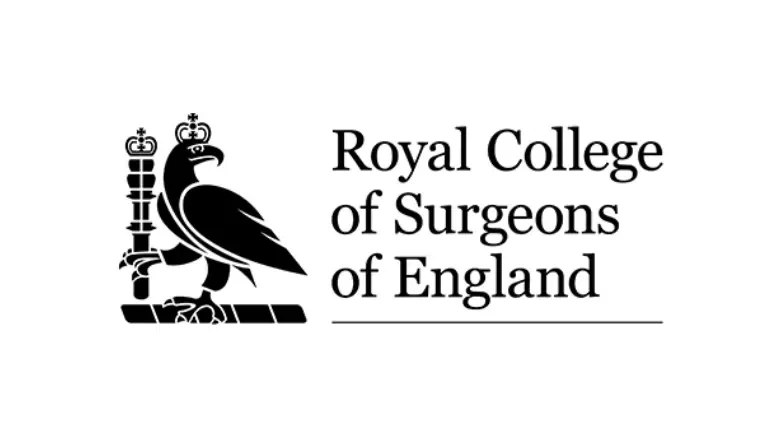The appearance of the areolas can vary greatly from person to person. For some individuals, larger areolas are simply the result of genetics, while for others, factors such as weight fluctuations, pregnancy, breastfeeding, or the natural ageing process can cause them to stretch over time. Although there is no “ideal” size for areolas, many women feel self-conscious if theirs appear disproportionately large in relation to their breasts. This concern can affect body confidence and self-esteem, prompting some to seek surgical solutions.
Areola reduction surgery is a highly effective procedure designed to create areolas that are more proportionate and aesthetically pleasing. By reducing the diameter of the areolas, the surgery helps achieve a more balanced, natural look that aligns with the patient’s desired appearance. This procedure is commonly chosen by women who feel their areolas are too large, asymmetrical, or stretched due to physical changes in the body.
In this article, we will provide a comprehensive overview of areola reduction surgery, including details about the cost, the surgical process, the recovery journey, and the additional procedures that can be performed alongside it to enhance overall breast aesthetics.
RELATED: Large Areolas: What Causes Them, and Are They Normal?
Areola reduction surgery offers a range of transformative benefits, both aesthetically and emotionally, for individuals who are dissatisfied with the size, shape, or symmetry of their areolas. This straightforward procedure can significantly enhance the appearance of the breasts, contributing to improved body confidence and overall well-being. Whether performed as a standalone procedure or in combination with other breast surgeries, areola reduction can deliver long-lasting, natural-looking results that align with your aesthetic goals.
RELATED: Nipple & Areola Surgery – Which Procedure is Right for Me?
One of the most notable benefits of areola reduction is the creation of a more proportionate appearance. Large or stretched areolas can sometimes appear out of balance with the overall size and shape of the breasts, especially following weight fluctuations, pregnancy, or breastfeeding. By reducing the diameter of the areolas, the surgery helps to achieve a more harmonious look, where the areolas are in proportion with the natural contours of the breasts.
In addition to enhancing proportion, areola reduction surgery is highly effective in creating greater symmetry between the breasts. It’s not uncommon for individuals to have areolas that differ in size or shape, which can be a source of self-consciousness. This procedure allows for precise adjustments, helping to correct asymmetry and achieve a more balanced, symmetrical appearance. Even small changes can make a significant difference in how the breasts look and feel.
The impact of areola reduction often goes beyond physical appearance, substantially boosting self-confidence. Many people who are self-conscious about the size or shape of their areolas may feel uncomfortable in certain situations, such as wearing swimwear, fitted tops, or during intimate moments. After surgery, patients frequently report feeling more at ease and confident in their own skin, with a newfound freedom to wear clothing they previously avoided.
Areola reduction is also an ideal complementary procedure when performed alongside other breast surgeries, such as breast reductions, breast augmentations, or breast lifts. During these procedures, the shape and position of the breasts are altered, which can affect the appearance of the areolas. Combining areola reduction with these surgeries helps maintain proportion and symmetry, enhancing the overall aesthetic outcome. It ensures that the areolas are appropriately sized and positioned to match the new breast contours, creating a more natural, cohesive look.
Another practical benefit of areola reduction is the comfort it can provide when wearing certain types of clothing. Large or stretched areolas can sometimes cause discomfort or self-consciousness when wearing tight-fitting clothes, lingerie, or swimwear. After surgery, many patients find that they feel more comfortable and confident in a wider variety of clothing styles, opening up new wardrobe options without the worry of how their breasts might appear.
How Can I Pay for Areola Reduction Surgery?
We aim to make the payment process as flexible and convenient as possible to suit your individual needs. We offer two main payment options for areola reduction surgery: paying in full or spreading the cost through a financing plan.
Payment in Full
You can choose to pay the entire cost of your areola reduction surgery upfront. This method is straightforward and ensures that all fees are settled before your procedure takes place. Full payment can typically be made via bank transfer, debit card, or other accepted payment methods, providing a simple and hassle-free option.
Financing Options
For those who prefer to manage the cost through instalments, we offer flexible financing plans in partnership with Chrysalis Finance. This option allows you to spread the cost of your surgery over a period that suits your financial situation.
0% APR Loans
You can opt for a 0% interest loan to cover the full cost of your surgery, repayable over 12 months. This interest-free option allows you to manage payments without incurring additional costs.
Longer-Term Finance Plans
If you prefer a longer repayment period, Chrysalis Finance offers extended plans with competitive interest rates, allowing you to spread payments over several years depending on your preference.
Am I Suitable for Areola Reduction Surgery?
Areola reduction surgery is a cosmetic procedure designed for individuals who are unhappy with the size, shape, or symmetry of their areolas. This concern can affect both men and women, as enlarged areolas may develop due to genetics, hormonal changes, weight fluctuations, pregnancy, or the natural ageing process. Whether the issue is purely aesthetic or linked to self-confidence, areola reduction offers a permanent solution for creating a more balanced and proportionate appearance.
The ideal candidate for areola reduction is someone who feels self-conscious or dissatisfied with the appearance of their areolas and is looking to achieve a more refined, symmetrical look. However, beyond personal preference, there are several important factors that determine whether a person is suitable for this type of surgery.
Firstly, candidates must be at least 18 years old. This is because the chest should be fully developed before any permanent surgical changes are made. Performing areola reduction on an underdeveloped chest could result in unsatisfactory results if the breast tissue continues to change over time. Age also ensures that patients are mature enough to make informed decisions about their bodies.
Good overall health is another crucial criterion. Candidates should be physically fit, with no underlying medical conditions that could complicate surgery or the healing process. Conditions such as uncontrolled diabetes, heart disease, or immune system disorders can increase the risk of complications during and after the procedure. Additionally, maintaining psychological well-being is important, as candidates should have a healthy mindset and a clear understanding of why they want the surgery. Cosmetic procedures can improve self-esteem, but they are not a cure for deeper emotional issues.
A healthy body weight is also significant when considering areola reduction surgery. Candidates with a Body Mass Index (BMI) of 30 or below are generally preferred because a lower BMI reduces the risk of surgical complications, such as poor wound healing or infection. Being within a healthy weight range also contributes to more predictable and stable results, as significant weight changes after surgery can alter the appearance of the breasts and areolas.
Realistic expectations are key to a satisfying outcome. Ideal candidates understand that while areola reduction can significantly improve the size, shape, and symmetry of the areolas, it has limitations. The goal of the surgery is to create natural-looking, proportionate results, not perfection. During the consultation process, the surgeon will discuss what can realistically be achieved based on the patient’s anatomy and aesthetic goals.
What to Expect from Areola Reduction Surgery
Areola reduction surgery is a relatively straightforward procedure that can deliver transformative aesthetic results. However, like any surgical intervention, it involves a process that includes preparation, the procedure itself, and a recovery period. Understanding what to expect at each stage can help you feel more confident and prepared for your surgical journey.
Before the Procedure
Proper preparation is key to ensuring a smooth surgery and an optimal recovery. In the weeks leading up to your areola reduction, there are several important steps to follow that will help minimise the risk of complications and support the healing process.
One of the most critical factors is maintaining a healthy Body Mass Index (BMI). To reduce the likelihood of surgical risks, your BMI should be at 30 or below. This threshold is important because individuals with a higher BMI face an increased risk of complications, such as poor wound healing, infection, and issues related to anaesthesia.
Another essential step is to stop using any form of nicotine, including smoking, vaping, or nicotine patches, for at least four weeks before surgery. Nicotine restricts blood flow, which can significantly impair the body’s ability to heal and increase the risk of surgical complications, such as tissue necrosis and delayed wound healing.
Alcohol consumption should also be moderated. While you don’t need to completely abstain from alcohol for extended periods, it’s advised to avoid binge drinking and limit alcohol intake for at least two weeks before your procedure. Alcohol can thin the blood, which may increase the risk of excessive bleeding during surgery and can also interfere with post-operative healing.
If you are taking hormone replacement therapy (HRT) or oral contraceptives, your surgeon will likely recommend stopping these medications at least four weeks before surgery. Both can increase the risk of developing blood clots, particularly during and after surgical procedures. Your surgeon will provide guidance on how to manage this safely.
Finally, preparing your home environment can make your recovery period much more comfortable. Arrange your living space so that essentials are within easy reach, and consider organising support from friends or family for household chores, especially during the first few days post-surgery when you’ll need to rest.
During Areola Reduction Surgery
Areola reduction surgery is typically performed under local anaesthesia, which means you’ll be awake but won’t feel any pain in the treated area. For patients who prefer to be completely unconscious during the procedure, general anaesthesia can be an option, depending on personal preference and the complexity of the surgery.
The procedure itself usually takes about 2 hours. Your surgeon will begin by carefully marking the areas around the areolas to outline the new, desired size and shape. A circular incision is made around the outer edge of the areola, and depending on the degree of reduction needed, an additional inner incision may be made to create a doughnut-shaped area of skin to be removed.
After the excess pigmented skin is excised, the surrounding skin is brought together with sutures to create a smaller, more symmetrical areola. The surgeon typically uses dissolvable stitches, which means you won’t need to have them removed later. Additionally, a permanent internal stitch may be placed to prevent the areola from stretching or widening over time, ensuring long-lasting results.
Once the suturing is complete, the surgical site will be carefully dressed, and you’ll be monitored for a short period before being discharged to recover at home the same day.
Recovery and Aftercare Process for Areola Reduction Surgery
Following areola reduction surgery, the recovery process is generally quick and straightforward, with most patients experiencing only mild discomfort. In the first few days after surgery, it’s normal to notice some swelling, bruising, and tenderness around the areolas and nipples. You might also experience temporary numbness in the area, which usually improves as the nerves heal over the following weeks.
During the first week, these side effects will gradually subside. Your surgeon will provide detailed aftercare instructions to support your recovery, including how to care for the surgical site, when to change dressings, and what activities to avoid. Wearing a supportive, non-underwired bra can help reduce swelling and provide gentle compression to aid healing.
Most people find they can return to work within one to two days, particularly if their job is not physically demanding. Light activities are usually fine soon after surgery, but it’s important to avoid strenuous exercise, heavy lifting, or activities that put strain on the chest muscles for at least two weeks. Doing so helps prevent complications such as wound separation or prolonged swelling.
Over the course of the first six weeks, all post-surgical side effects, including swelling and bruising, should fully resolve. While initial results will be visible quite soon after the procedure, the final shape and appearance of the areolas will continue to improve as the tissues settle and any residual swelling fades.
Scarring from areola reduction is typically minimal and discreet. The incision is made along the natural border of the areola, where the difference in skin tone helps to camouflage the scar. With proper aftercare and time, the scar will fade significantly, often becoming barely noticeable.
Your surgeon will schedule follow-up appointments to monitor your progress, check that the healing process is on track, and address any concerns you may have. It’s important to attend these appointments as part of your post-operative care plan to ensure the best possible outcome.
What Procedures Are Commonly Combined with Areola Reduction?
One of the key advantages of areola reduction surgery is its ability to complement other breast procedures, enhancing the overall aesthetic outcome. It’s very common for patients to combine areola reduction with other forms of breast surgery, as this allows for a more harmonious and proportionate appearance. Additionally, when areola reduction is performed alongside other procedures, it often comes at a reduced cost compared to having it done as a standalone surgery.
RELATED: Which is the Right Breast Procedure for Me?
Breast Augmentation
While breast augmentation focuses on enhancing breast volume through implants, areola reduction can be an excellent complementary procedure. In some cases, the placement of breast implants can cause the areolas to stretch slightly, especially if large implants are used. Performing an areola reduction alongside augmentation helps achieve a more symmetrical and refined appearance, ensuring the areolas remain proportionate to the enhanced breast size.
Breast Uplift (Mastopexy)
Areola reduction is frequently combined with a breast uplift, also known as a mastopexy. During a breast lift, the surgeon reshapes and elevates sagging breast tissue to create a more youthful, firmer contour. As part of this process, the areolas are often repositioned to a higher, more central location on the breast. Since the skin around the breast is being tightened, it’s an ideal opportunity to resize the areolas, ensuring they are proportionate to the new breast shape.
Breast Reduction
For women undergoing breast reduction surgery, areola reduction is almost always part of the procedure. Breast reduction involves the removal of excess breast tissue and skin to achieve a smaller, lighter breast size. As the overall breast size decreases, the areolas may appear disproportionately large if not adjusted accordingly. Reducing the size of the areolas helps maintain a natural, balanced look that complements the new breast contours.
Breast Reconstructive Procedures
Areola reduction can also be integrated into other breast reshaping surgeries, such as corrective procedures following previous breast surgeries or reconstruction after mastectomy. In these cases, adjusting the size and shape of the areolas can significantly improve symmetry and aesthetic outcomes, particularly when working to correct asymmetry or restore natural proportions.
Cost Benefits of Combined Procedures
When areola reduction is performed in combination with other breast surgeries, it is often offered at a reduced cost compared to scheduling it as a separate procedure. This is because many of the associated fees, such as anaesthesia and hospital costs, are shared between the procedures. Additionally, combining surgeries can lead to a more efficient recovery process, as you’ll only need to go through one period of post-operative healing rather than recovering from multiple separate surgeries.
Areola Reduction FAQs
Can I decide how much my areola is reduced?
Yes, you can. During your consultation, your surgeon will discuss the best approach to achieve the proportions you’re looking for. While the final choice is entirely yours, the surgeon will offer expert advice based on your breast shape and aesthetic goals to help you make an informed decision.
Will areola reduction affect my ability to breastfeed?
No, it shouldn’t. When performed correctly, areola reduction surgery does not interfere with the milk ducts beneath the nipple, so it won’t affect your ability to breastfeed in the future.
Is areola reduction surgery painful?
The procedure is carried out under local anaesthetic or sedation, so you won’t feel any pain during the surgery itself. After the procedure, you may experience some soreness or discomfort, but this is usually mild and tends to ease within the first week as you recover.
Will there be scarring after areola reduction surgery?
Yes, there will be a scar, but it’s placed around the outer edge of the areola where it blends naturally with the surrounding skin. Over time, the scar will fade and flatten, becoming less noticeable as the healing process progresses.
How soon will I see the results?
You’ll notice a difference in the size of your areolas immediately after surgery. However, the final results will become more apparent once any swelling has gone down, which usually takes around six to eight weeks. At that point, you’ll be able to see the true shape and size of your areolas.
Areola Reduction at Centre for Surgery
At Centre for Surgery, we specialise in providing advanced cosmetic procedures, including areola reduction surgery, to help our patients achieve natural, aesthetically pleasing results. Our highly experienced plastic surgeons are experts in breast and areola surgery, offering bespoke treatment plans tailored to your unique needs and desired outcomes. We are committed to delivering the highest standards of patient care, ensuring your safety, comfort, and satisfaction at every stage of your journey.
Located at our state-of-the-art Baker Street clinic in London, we pride ourselves on creating a welcoming and professional environment where patients feel supported from their first consultation through to their final follow-up. Our surgical team uses the latest techniques to minimise scarring, enhance symmetry, and achieve beautiful, natural-looking results that boost your confidence and body image.
Why Choose Centre for Surgery?
Our team consists of some of the UK’s leading plastic surgeons, all of whom have extensive experience in aesthetic breast surgery. We believe in a patient-centred approach, ensuring that you receive personalised care tailored to your goals. From your initial consultation, where we’ll discuss your expectations and options, through to your recovery, we’ll be with you every step of the way. Our surgeons are supported by a dedicated medical team who prioritise your health, well-being, and comfort.
To learn more about our clinic and philosophy, visit our About Us page. You can also meet our expert surgeons and medical professionals on our Meet the Team page.
Patient Testimonials
Emma R., London:
“I had my areola reduction at Centre for Surgery, and I couldn’t be happier with the results. The team was incredibly supportive, and my surgeon was attentive, professional, and made me feel at ease throughout the entire process. The results are exactly what I hoped for, and my confidence has improved so much.”
Sophie L., Manchester:
“From start to finish, my experience at Centre for Surgery was outstanding. The consultation was informative, the staff were friendly, and the surgery itself went smoothly. I was amazed at how quickly I recovered, and the final results exceeded my expectations. I can’t thank the team enough!”
Charlotte M., Birmingham:
“I was really nervous about having areola reduction surgery, but the team at Centre for Surgery made me feel completely comfortable. They answered all my questions, and the level of care was fantastic. My surgeon did an incredible job—I finally feel confident in my own skin.”
Finance Options
We understand that cost can be a consideration when planning cosmetic surgery. That’s why we offer flexible finance options through Chrysalis Finance, including 0% APR loans repayable over 12 months. Longer-term financing options are also available with competitive interest rates, making it easier for you to spread the cost of your procedure in a way that suits your budget. Our team will be happy to guide you through the available payment plans during your consultation.
Book Your Consultation Today
If you’re considering areola reduction surgery, we invite you to book a consultation with one of our expert surgeons. During this appointment, we’ll discuss your goals, assess your suitability for the procedure, and create a personalised treatment plan tailored to your needs.
Contact Us:
📍 Centre for Surgery, Baker Street Clinic, London
📞 Call us at: 020 7993 4849
📧 Email: info@centreforsurgery.com
Learn More
For more information about cosmetic surgery and breast procedures, explore our Plastic Surgery Blog where we cover a wide range of topics to help you make informed decisions. You can also find answers to common questions on our comprehensive Clinic FAQs page.
At Centre for Surgery, we’re here to support you on your journey towards greater confidence and self-assurance. Get in touch today to take the first step.





















